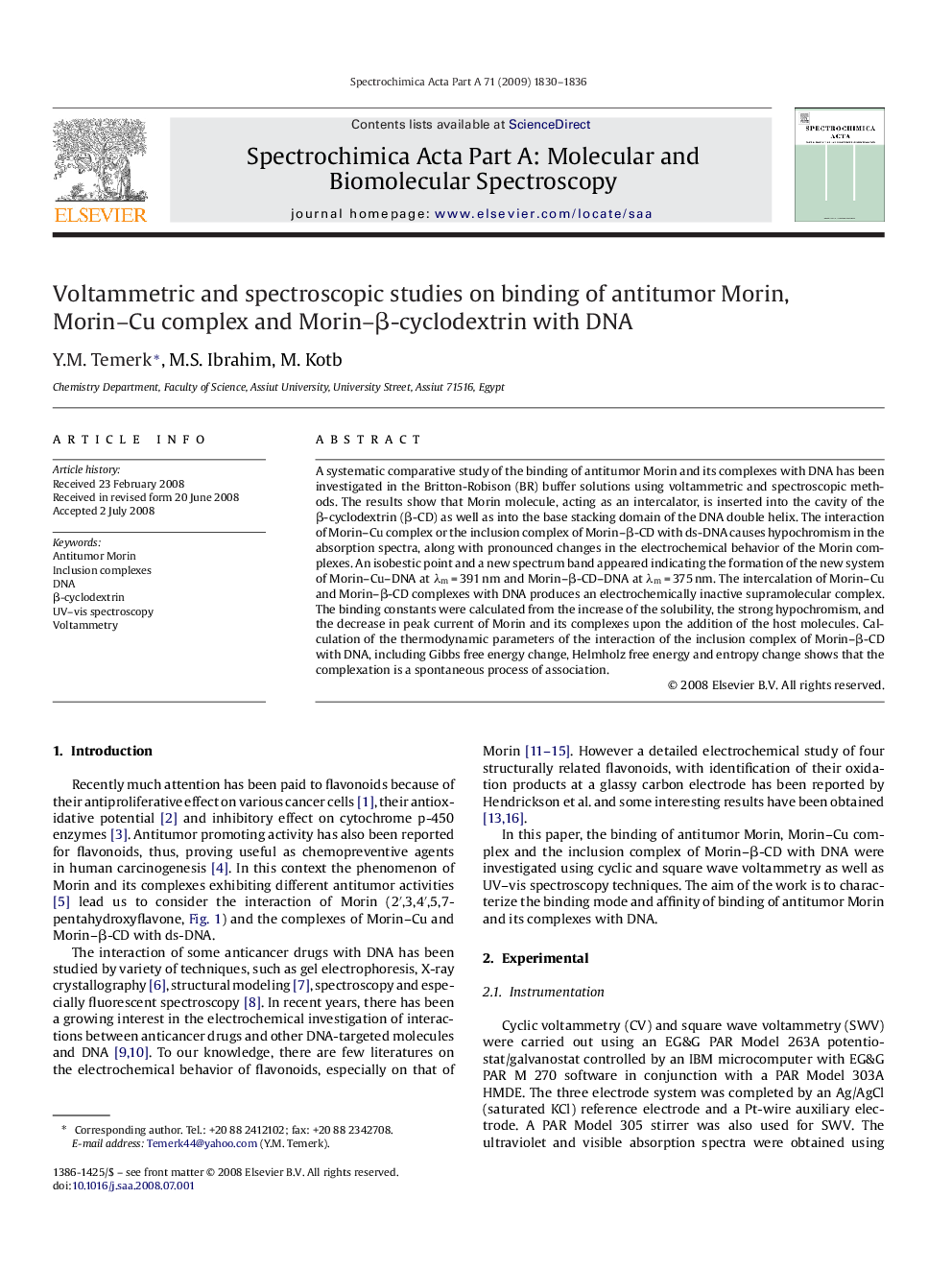| Article ID | Journal | Published Year | Pages | File Type |
|---|---|---|---|---|
| 1234978 | Spectrochimica Acta Part A: Molecular and Biomolecular Spectroscopy | 2009 | 7 Pages |
A systematic comparative study of the binding of antitumor Morin and its complexes with DNA has been investigated in the Britton-Robison (BR) buffer solutions using voltammetric and spectroscopic methods. The results show that Morin molecule, acting as an intercalator, is inserted into the cavity of the β-cyclodextrin (β-CD) as well as into the base stacking domain of the DNA double helix. The interaction of Morin–Cu complex or the inclusion complex of Morin–β-CD with ds-DNA causes hypochromism in the absorption spectra, along with pronounced changes in the electrochemical behavior of the Morin complexes. An isobestic point and a new spectrum band appeared indicating the formation of the new system of Morin–Cu–DNA at λm = 391 nm and Morin–β-CD–DNA at λm = 375 nm. The intercalation of Morin–Cu and Morin–β-CD complexes with DNA produces an electrochemically inactive supramolecular complex. The binding constants were calculated from the increase of the solubility, the strong hypochromism, and the decrease in peak current of Morin and its complexes upon the addition of the host molecules. Calculation of the thermodynamic parameters of the interaction of the inclusion complex of Morin–β-CD with DNA, including Gibbs free energy change, Helmholz free energy and entropy change shows that the complexation is a spontaneous process of association.
